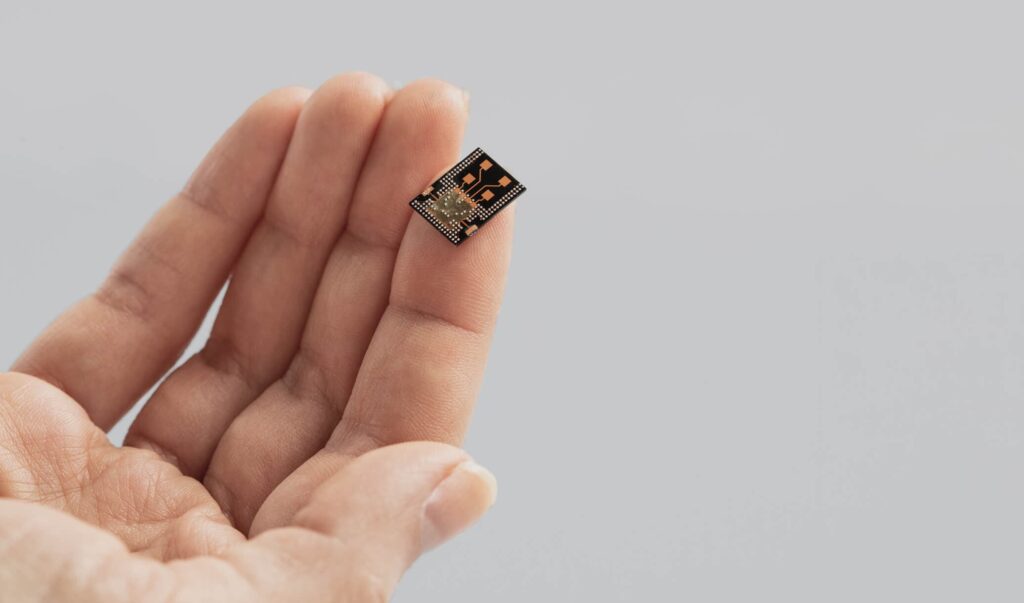Smartphones, laptops and computers pierced into most people’s life when it became so easy to interact with, and in that aspect – mouse and touch technology had greatly helped us to quickly get through what we want from the devices. And the next interactive tech following up happens to be motion or gesture control in every gadget or device we use, starting from TVs, to smartwatches, for making it much quicker to handle, with just a swipe of our hand.
Google looks for merging the gesture-controlling tech to its devices, and ‘Soli’ takes care of that, designing, and computing all that is needed into a minimal-sized chip that fits even into a smartwatch.
What is Soli?
Project Soli by the tech giant aims to converge the abilities of a radar into a 10x10mm chip, for the effective integration of the same into all required tech-devices.
Google announced ‘Soli’ in 2015, that functions under its ‘ATAP’ (Advanced Technology and Projects) and had equipped the chip in few of its devices including Pixel 4, Nest Hub & Nest Thermostat.
Soli engineers custom-built machine learning (ML) and data collection pipelines to design robust ML models for different use cases. These models act as the gateway between users and the chip, to make it understandable reliably from movements.
How does Soli Work?
Google’s Soli is just another radar-device, but with enhanced capabilities and marred size, that works on three steps – emitting, reflecting and recognizing radar.
Soli’s radar emits electromagnetic waves in a broad beam, wherein the waves get scattered by any object that hinders, while some of them gets reflected towards the antenna.
The chip then analyzes properties of the reflected signal, such as energy, time delay and frequency shift to capture rich information about the object’s characteristics behaviors, including size, shape orientation, material, distance and velocity.
By processing the temporal signal variations and other captured characteristics of the signal, Soli can distinguish between complex movements to understand the size, shape, orientation, material, distance and velocity of the object within its field.
The experts working on the project claim that even butterfly’s wings are detectable by Soli’s chip.
Smallest Radar device ever
Image: Google
The chip greatly reduces system design complexity and operates with low power consumption, as the result of team’s several hardware prototypes. The team developed and evaluated chip designs based on two modulation architectures: a Frequency Modulated Continuous Wave (FMCW) radar and a Direct-Sequence Spread Spectrum (DSSS) radar. Both chips integrate the entire radar system into a small package, including multiple-beam forming antennas that enable 3D tracking and imaging. Unlike traditional radars, Soli has no moving hardware components.
It might had been a real challenge for the team to infuse the ability in a small chip. And it took five years to incorporate the gesture-controlling millimeter-sized radar chip into its product Pixel 4, the project’s official website writes.
Soli & Google Pixel 4
While many of the Google projects are skeptic about its arrival into the market, Soli had already found its way to the hands of users.
Pixel 4 becomes the first device to deploy Soli’s radar for its ‘Motion Sense’ feature, where users can handle few options without even touching the phone. It acts as a radar bubble around the phone, which detects any movements near to the phone and inculcate to itself what to do next.
Related Posts
For example, Motion Sense can detect your hand if approaching the phone and will automatically trigger the face unlock sensors, or simply the screen goes on, when you are about to take the phone. The feature indeed undergo few cool stuffs, including that the alarm suddenly becomes silent, when you reach the phone, and you just have to snooze or dismiss. You can also wave your hand over the phone to go forward or back a track when music is playing.
The pokemon wallpaper of Pixel 4 is exclusively made for this feature. If you wave at the pokemon, it will wave back at you and you can tickle the creature, & it will behave the same. It looks interesting, just like talking-tom at its time!
Future of Soli
Though Google introduced the Soli in its Pixel 4, it discontinued doing so in their upcoming models, however, equipped the same in its speaker Nest Hub and Nest thermostat. More than smartphone, Google eyes on to hinge the tech to smart-home devices to leverage the maximum out of it.
With this, it’s expected that home-gadgets like speaker, thermostat, and TV might include this radar bubble more than smartphones in future.
Soli also confirms that their models running on devices don’t send sensor data to Google servers, allowing for private and robust sensing.
Subscribe to our site for more tech-updates & don’t forget to share it in social media.

